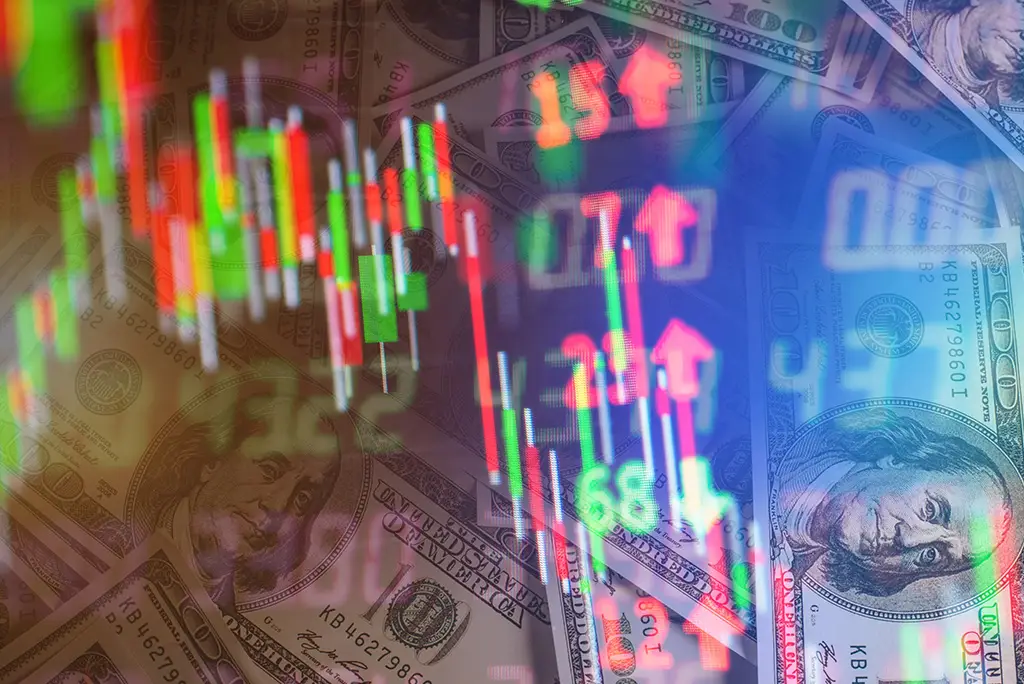The Bureau of Economic Analysis reports that the US economy grew by 2% in the first quarter. The revised figure is higher than the previous reading of 1.3%.
The first-quarter growth represents a sharp increase. The US economy growth in the first quarter slowed compared to the previous two quarters. The GDP revision is part of a trend where economic indicators are surpassing economists’ projections.
Latest data
Economists had anticipated a lower growth rate for the first quarter. The US economy showed resilience despite the slowdown in growth.
Contrary to expectations, the latest data reveals that the anticipated upward trend in weekly jobless claims hasn’t materialized. Jobless claims reached their lowest levels since May, with 239,000 claims in the week ending June 24.
Furthermore, consumer confidence data in June surged to its highest level in 18 months. Additionally, durable goods orders in May defied economists’ expectations of a decline and instead experienced growth. Moreover, May new home sales surpassed expectations.
Recession may not be inevitable
Gregory Daco, Chief Economist at EY, stated that the US economy displays signs of resilience. Many are questioning the inevitability of a long-forecasted recession in light of these positive indicators. Economists are considering the possibility of a soft landing for the economy with a sustainable 2% inflation rate.
The economy’s strength is challenging the notion of an impending recession. The data suggests that a recession may not be inevitable.
The Fed is facing an economy with significant momentum
In light of the strong data, economists are compelled to reassess recession projections while investors adjust their Federal Reserve expectations. Moreover, futures tied to the Fed’s benchmark interest rate now project an 86.8% chance of a rate hike in July.
This probability has surged significantly by over 10 percentage points in the past week and 30 points in the last month. Notably, according to Citi’s economists, the current policies of the Fed may not provide sufficient restrictions to slow down the economy. Recent data, including lower jobless claims and GDP revisions, support this perspective.
There are risks to consensus growth forecasts, which could lead to upside risks for inflation outcomes. The Fed is facing an economy with significant momentum, making policy decisions challenging.
Based on the positive data, investors are adjusting their expectations for the Federal Reserve’s actions. Economists believe the economy’s strength may require more restrictive policies from the Fed. The potential for higher interest rates reflects the changing outlook for the Federal Reserve.
FED Chair Jerome Powell’s view
Meanwhile, Federal Reserve Chair Jerome Powell has indicated a longer duration of higher interest rates. Furthermore, Powell reaffirmed the need for additional rate hikes in 2023.
On Wednesday, Powell acknowledged that inflation is not declining as rapidly as anticipated. Consequently, Powell’s recent comments suggest a persistent concern about inflationary pressures. Consequently, these statements from Powell imply a continued cautious approach regarding monetary policy.
Moreover, Powell stated that inflation has moderated since the middle of last year but remains high. However, bringing inflation back down to 2% is a process that has a long way to go.
In summary, Powell’s indications of prolonged higher interest rates and the need for further rate hikes and concerns about inflation point to a cautious and vigilant stance on monetary policy.
The economic update will be coming with the PCE index
The upcoming Personal Consumption Expenditure index release will provide the next inflation update. The “core” PCE, excluding food and energy costs, is expected to show a 4.7% increase over the prior year.
This figure is unchanged from April, indicating persistent inflationary pressures. On a monthly basis, “core” PCE is projected to rise 0.4% in May. The Federal Reserve aims for an average inflation target of 2%.

